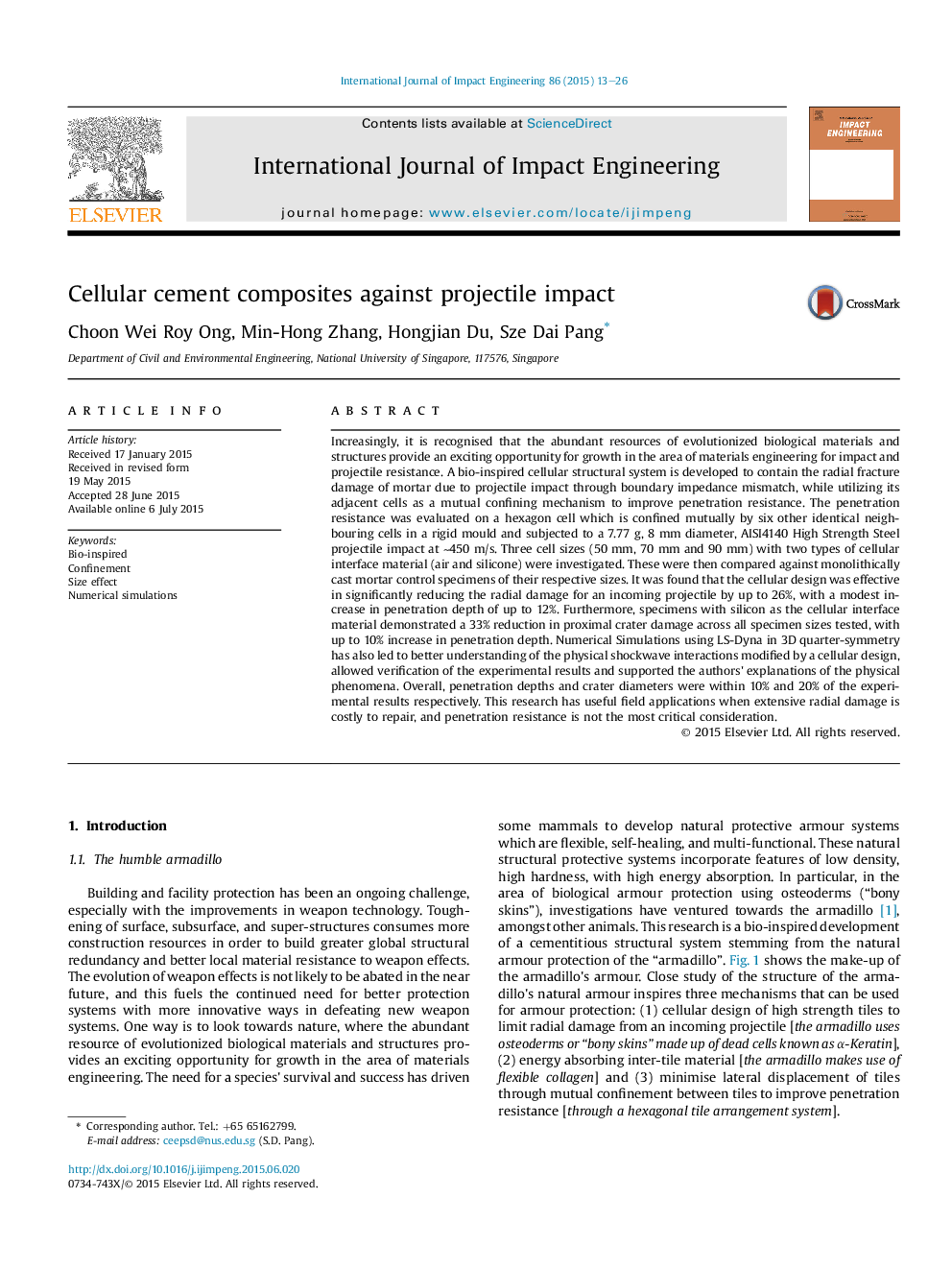| کد مقاله | کد نشریه | سال انتشار | مقاله انگلیسی | نسخه تمام متن |
|---|---|---|---|---|
| 776383 | 1464065 | 2015 | 14 صفحه PDF | دانلود رایگان |
• A bio-inspired cellular system is developed to reduce damage by projectile impact.
• Cellular design reduced crater damage with modest increase in penetration depth.
• Addition of silicone as a cellular interface further reduced crater damage.
Increasingly, it is recognised that the abundant resources of evolutionized biological materials and structures provide an exciting opportunity for growth in the area of materials engineering for impact and projectile resistance. A bio-inspired cellular structural system is developed to contain the radial fracture damage of mortar due to projectile impact through boundary impedance mismatch, while utilizing its adjacent cells as a mutual confining mechanism to improve penetration resistance. The penetration resistance was evaluated on a hexagon cell which is confined mutually by six other identical neighbouring cells in a rigid mould and subjected to a 7.77 g, 8 mm diameter, AISI4140 High Strength Steel projectile impact at ∼450 m/s. Three cell sizes (50 mm, 70 mm and 90 mm) with two types of cellular interface material (air and silicone) were investigated. These were then compared against monolithically cast mortar control specimens of their respective sizes. It was found that the cellular design was effective in significantly reducing the radial damage for an incoming projectile by up to 26%, with a modest increase in penetration depth of up to 12%. Furthermore, specimens with silicon as the cellular interface material demonstrated a 33% reduction in proximal crater damage across all specimen sizes tested, with up to 10% increase in penetration depth. Numerical Simulations using LS-Dyna in 3D quarter-symmetry has also led to better understanding of the physical shockwave interactions modified by a cellular design, allowed verification of the experimental results and supported the authors' explanations of the physical phenomena. Overall, penetration depths and crater diameters were within 10% and 20% of the experimental results respectively. This research has useful field applications when extensive radial damage is costly to repair, and penetration resistance is not the most critical consideration.
Journal: International Journal of Impact Engineering - Volume 86, December 2015, Pages 13–26
